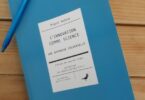Dans le University World News du 14 avril 2017, un papier promotionnel d’un des coéditeurs du livre Creative Learning in Higher Education (Routledge, 2017, 246 p.) de Watts et Blessinger. Linda S. Watts est professeure d’études américaines et codirectrice du Project for Interdisciplinary Pedagogy à la University of Washington Bothell. Quant à lui, Patrick Blessinger est fondateur et directeur exécutif du International Higher Education Teaching and Learning Association (HETL), aux États-Unis. C’est lui qui signe l’article.
D’après le quatrième de couverture, dans cet ouvrage “…International contributors explore ways to foster creativity in any student, regardless of academic discipline or demographic characteristics and demonstrate that creativity is a skill all students can and should learn.” Selon Maha Bali, du Center for Teaching and Learning de l’Université du Caire (que nous avons déjà citée dans ce blogue): “This isn’t a ‘light’ book on creativity in education – it interrogates the status quo of education and offers reflective, practical, and theoretical approaches to subverting this with transformative creative teaching and learning. “. Dans son article, Blessinger rappelle d’ailleurs l’intérêt d’enseigner la créativité ET d’enseigner de manière créative…
« Creative learning is important because jobs that do not require some form of creativity are more likely to be outsourced or automated. Creative industries contribute significantly to gross economic output and that contribution is likely to increase in the future. […] Employers and others are not only concerned about what graduates know but, equally important, they are concerned with how creative they are in applying that knowledge.” (Blessinger, 2017)
Cette idée que tous peuvent apprendre la créativité semble fondamentale à la démarche des auteurs:
“Creative learning is an intentional act so for creativity to flourish learners must also be motivated to act. Notwithstanding the fact that people may be born with certain innate talents and skills, it is more useful and productive to start with the premise that all students are capable of creative learning and, if given the proper nurturing and motivation, they can learn to operate at higher levels of creative learning. » (Blessinger, 2017)
Blessinger base notamment sa définition de la créativité sur trois caractéristiques identifiées par Mihaly Csikszentmihalyi et d’autres penseurs:
- “It is domain, field and individual specific – the domain (the academic discipline) includes the knowledge/symbols/rules, the field includes the experts/gatekeepers of the domain, and the individuals are the source of the novel idea,
- It is process- and outcome-oriented, and
- It is embedded within the culture – the specific disciplinary culture as well as the broader socio-culture.”
Le fait que la créativité doive être associée à un contenu disciplinaire semble important:
« Creativity changes the domain in some meaningful way and it may result in an innovation in wider society. Within this context, creativity can be defined as: the creation of novel, original knowledge that changes a domain and is recognised as such by the domain’s experts. Therefore, based on this definition, it follows that one must first master the domain in order to build a deep and fertile foundation from which original ideas can grow.” (Blessinger, 2017, nos emphases)
Par ailleurs, Blessinger semble établir un lien entre pensée critique et créativité comme compétences transversales complémentaires…
“Second, course projects and learning activities should be structured to encourage students to think creatively and critically at the same time, to connect ideas across courses (and disciplines) and to identify common themes and patterns. To become a creative learner, one must engage consistently over a long period of time at the higher order levels of thinking and doing. » (Blessinger, 2017, nos emphases)
Tables des matières du livre
Preface
Part I: Principles and Concepts
- Chapter One: History and Nature of Creative Learning, Patrick Blessinger and Linda S. Watts
Part II: Successful Practices in Creative Learning: Cases
Chapter Two: Promoting Creative Learners through Innovative Pedagogy, Fredricka Reisman
- Chapter Three: Participatory Choreographies, Our Future Cities, and the Place of Creative Learning in International Arts Exchanges, Kanta Kochhar-Lindgren
- Chapter Four: Configuring Interdisciplinarity: The Common Core at the University of Hong Kong, Gray Kochhar-Lindgren
- Chapter Five: Creating Meaningful Learning Spaces through Phenomenological Strategies, David Giles and Clare McCarty
- Chapter Six: Creative Learning Strategies:Learning How to Cooperate, Nives Dolšak, and Cinnamon Hillyard
- Chapter Seven: Toward Mindful Assessment in Higher Education: A Case-Study in Contemplative Commentary on Student Work to Promote Creative Learning, Linda S. Watts
- Chapter Eight: Play and 3D Enquiry for Stimulating Creative Learning, Alison James
- Chapter Nine: The Dynamics of Creative Learning: A Case Study in Best Practices in Public Urban Higher Education, Gina Rae Foster
Part III: Enhancing Creative Learning: Essays
- Chapter Ten: Creative Approaches to Stimulate Classroom Discussions, Stephen Brookfield
- Chapter Eleven: Developing Creative Competencies through Improvisation—Living Musically, Rob Kaplan
- Chapter Twelve: Realizing the Potential for Creativity in Teaching and Learning, Lorraine Stefani
Part IV: Conclusion
- Chapter Thirteen: The Future of Creative Learning, Linda S. Watts and Patrick Blessinger
Sources:
Blessinger, Patrick, « Transforming higher education’s creative capacity », University World News, 14 April 2017, Issue No:455
Routledge (A Taylor & Francis Group), « Creative Learning in Higher Education » (fiche du livre), 2017






